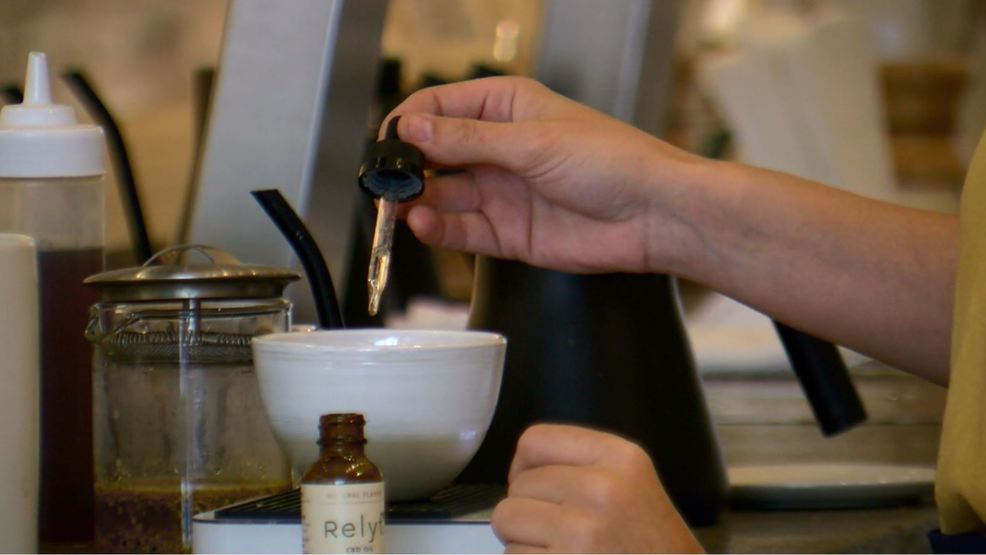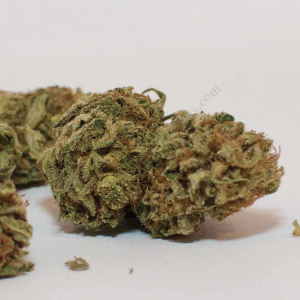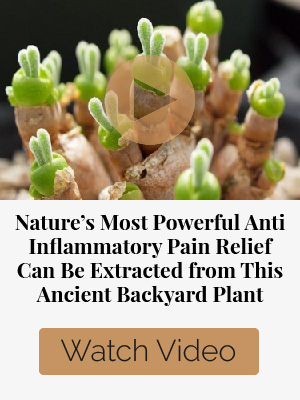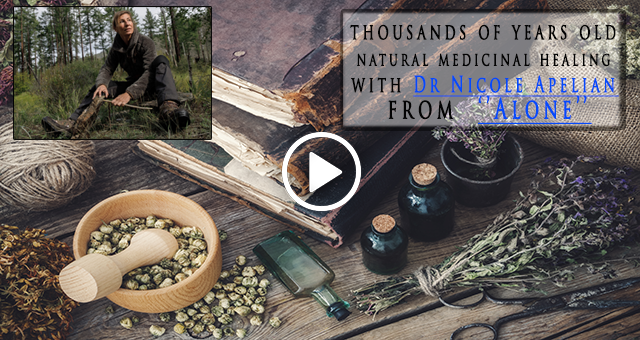
If you haven’t yet heard of CBD oil, you will soon. It’s one of the hottest, trendiest products on the market, and it claims to be a cure-all for whatever ails you. Celebrities are not only talking about and endorsing a variety of CBD oil-infused products, but they’re also creating and selling product lines of their own. CBD oil can come in everything from your morning coffee to your nighttime facial crème. It seems everyone wants to get in on the latest craze.
Young people are becoming increasingly more aware of the vast claims made about this “magical elixir” as well; so it is important to learn more about it so that you can share the facts with them and help them cut through the extravagant marketing claims.
Does CBD get you high? What are the actual benefits? Will it show up on a drug test? Here’s everything you need to know about the product that’s suddenly everywhere.
There’s no question that CBD is the buzzy wellness product of the moment. If you live in a state where it’s currently legal, you might feel like CBD has gone from being sort of around to absolutely everywhere all at once. Coffee shops sell CBD lattes, spas offer CBD facials, beauty companies are rushing to release lotions with CBD or hemp oils in their formulas. And everyone from your anxious coworker to your arthritis-suffering dad wants to get their hands on some CBD gummies.
But even though it’s infiltrating pretty much every corner of the wellness world (hi, vegan CBD brownies!) many people still find CBD a little confusing—especially when it comes to figuring out the right way to use it and how to make sure the stuff you’re buying is, you know, actually legit. Below, we asked experts to answer the most pressing questions about CBD.
OK, first things first. What is CBD?
CBD, short for cannabidiol, is a chemical compound from the cannabis plant. It’s a naturally occurring substance that’s used in products like oils and edibles to impart a feeling of relaxation and calm. Unlike its cousin tetrahydrocannabinol (THC), it’s not psychoactive.
So you’re saying CBD won’t get me high?
Nope. The cannabis plant is made up of two main players: CBD and THC. “CBD is the non-psychoactive portion of the plant, so what that means is you won’t have any effects like euphoria,” says Junella Chin, DO, an osteopathic physician and a medical cannabis expert for cannabisMD. “You won’t feel sedated or altered in any way.”
There are two possible exceptions to this. The first is that some people, for unknown reasons, just react differently to CBD. According to Dr. Chin, about 5% of people say they feel altered after taking CBD. “Usually they’re the same people who have side effects from Advil or Tylenol,” she says. You never know how your body will react to any new supplement, so when taking CBD for the first time, do so safely under supervision.
It’s also crucial to buy third-party-tested CBD for quality assurance (more on this later). Because the FDA doesn’t regulate CBD, it is possible to buy a product that is more or less potent than advertised, or even contains small amounts of THC.
What are the health benefits of CBD?
The only CBD medication that is currently FDA-approved is Epidiolex, which the agency approved last year for the treatment of certain types of epilepsy. But many people swear CBD has helped with a slew of other health conditions, including back pain, osteoarthritis, even cancer.
“My practice has patients walking in every day asking about CBD,” says Houman Danesh, MD, director of integrative pain management for the Mount Sinai Hospital in New York City. But while there’s lots of anecdotal evidence, he says, “it’s still very difficult to say” what the real benefits are due to a serious lack of research.
“Right now, you just have pharmacies trying to make some sort of sense out of it and say, ‘Yes, it works for this,'” he says, “but that’s not the way medicine is practiced—it should be based on evidence, and there’s not a lot of evidence to really support these claims.”
What is this supposed miracle potion; is it safe; is it legal; and what exactly does it do?
By definition, CBD is short for cannabidiol, a compound found in and extracted from the cannabis plant. CBD oil may contain very low levels of THC, the compound in marijuana that produces a “high” – but that is not always the case.
The claims of health and wellness benefits stretch far and wide. In fact, ads for CBD oil claim it can address:
Inflammation
Pain
Anxiety
Depression
Post-traumatic stress
Insomnia
Cancer
Liver health
In addition to assertions of medical benefits, there are claims that CBD can prevent hangovers, help with acne and assist in social situations. You can now find CBD in health and beauty care for both people and pets; lip balms, bath bombs, sleeping masks, shampoos, massage oils, anti-wrinkle serums, anti-acne lotions, soaps, mascara, dog food, and cat treats. You name it and there seems to be a CBD oil-infused product popping up for it.
Health experts say consumers should be advised—just because a product is being sold online or on a store shelf does not mean it is credible or dependable.
Necessary research is being conducted with regard to the potential benefits CBD may provide. This research has led to the Food and Drug Administration approving a cannabidiol-based drug called Epidiolex. It is the first and only FDA-approved prescription cannabidiol (CBD), and it can be prescribed for Dravet and LGS—two severe forms of epilepsy. Preliminary research also indicates that CBD may aid in reducing the symptoms of schizophrenia. As for other benefits, the jury is still out.
Unlike the CBD lip balms and serums you might find on the Internet, Epidiolex also has instructions for dosing the drug and lists of known adverse reactions and drug interactions that can only come with clinical tests.
The newest claim is that marijuana and CBD could help people avoid opioids. However, according to National Families in Action and The Marijuana Report, people who use various forms of marijuana for medical use are more— not less—likely to abuse prescription drugs including painkillers, stimulants, and tranquilizers.
Physicians also warn that research is in its infancy and there are potential hazards with experimenting with CBD. Because of the general lack of oversight of the various CBD products available, there is no way of knowing exactly what is in these products. There can be contaminates from pesticides, herbicides, and solvents used in the extraction process. There can also be a mislabeling of the amount of THC in a product, which can be especially concerning for children. And when researchers put a large number of CBD products to the test, many showed to contain synthetic CBD, while others contained little or no CBD at all—contrary to what the packaging promoted. CBD can have negative interactions with other medications as well. And health experts say that there are many different strains of the cannabis plant with differing strengths and differing effects, and that purity and dosage in many of these products on the market are not reliable.
As far as the legality of CBD oil, that depends on your state. But as far as the federal law is concerned, cannabis and cannabis products remain illegal in every state—other than prescription cannabidiol Epidiolex. Confusing, yes.
CBD may not exactly be today’s snake oil, but it isn’t likely to be the miracle in a bottle that so many people are banking on either. The good news is, the U.S. Food and Drug Administration has approved purified CBD to treat two extreme forms of epilepsy. However, no other forms of CBD have been approved to treat any other disease or condition; nor has it been proven to take away our wrinkles or acne, aide in liver health or improve our pets’ lives. While CBD may have further potential, it is important to allow the experts to conduct their research and take the appropriate measures to ensure that any product that reaches us and our family members are promoted in a factually correct manner, and its contents have been proven to be safe and effective.
The premise is that many modern day medicines work on the basis that they treat the symptoms and not the cause, but contained within The Lost Book of Remedies are a number of tinctures and tonics made from plants and leaves that will treat the cause of the illness, thus eradicating the disease altogether.
The book is a direct copy of the little notebook carried around by the author’s grandfather when treating his patients. However, the illustrations of the plants have been updated to photographs so that they are easier for you to identify.

How to Make CBD Oil At Home
If you’ve been part of the cannabis community for any length of time, especially for medical purposes, you’ve likely heard a good deal about the therapeutic effects of CBD. Also known as cannabidiol, CBD is a cannabinoid with anti-inflammatory, analgesic, and anxiolytic effects. It can treat chronic pain and inflammation, regulate mood and sleep, ease nausea, and treat seizures and muscle spasms, just to name a few applications.
There is an overwhelming abundance of retailers selling CBD oil on the open market, but it can be hard to determine the quality and purity of the product you’re buying. Unless you’re buying from a trusted retailer like Joy Organics (see our CBD Buyer’s Guide to learn what to look for when buying CBD), sorting out the good products from the junk can be difficult.
You can skip the guesswork by making CBD yourself, in the comfort and privacy of your own home, with no special equipment or toxic chemicals. This way, you control every step of the process, from selecting the strain to choosing the dosage concentration, to the actual extraction itself; you know exactly what you’re getting in the finished product and can modify your materials or methods according to your specific needs. It might seem complicated, but we promise you, you can do this! Here, we’ll discuss the science of cannabinoid extraction and tell you how to make CBD oil at home for yourself.
At Home CBD: You Get Back What You Put In
First, we need to talk about choosing your starting material (aka the flower or extract you’ll be infusing into the oil). This is what determines the cannabinoid content of your finished CBD oil (and therefore its effects on you). This is especially important when using the method we’ll outline below, because it’s not possible to extract only CBD without taking other cannabinoids, like THC, along for the ride. This means that if you start with a high-THC flower, you’ll end up with a high-THC oil. There is no way to separate the THC from the CBD without specialized laboratory equipment. Therefore, depending on your starting material, your finished CBD oil may or may not also contain THC; it all depends on the cannabinoid content of your starting material.
You can absolutely use THC-rich strains of cannabis for your CBD oil if you choose. THC has a number of therapeutic benefits that may work in concert with those of CBD, producing synergistic effects. If you’re going this route, we recommend an indica strain, as you’ll get the benefits of high CBD and other beneficial cannabinoid content without the “head high” associated with sativas, which can make it hard to function for some consumers. This type of CBD oil (sometimes called Rick Simpson Oil, or RSO, in this high-THC incarnation) is especially good for patients suffering from severe chronic pain and various cancers. However, it can cause drowsiness and impairment at high doses so it may not be right for everyone.
So, what do you do if you want to make CBD oil with little-to-no THC? If you’re fortunate enough to live in a state where cannabis is legal for you, you can request a high-CBD strain from your budtender at the dispensary; they’ll gladly point you in the right direction. However, if you don’t reside in a state where you can buy your flower from a trusted, licensed professional, Farm Bill-compliant hemp flower is legal for purchase, though it’s not available over the counter in most places.
This means that it is legal to order organically-grown hemp flower in all fifty states, and you can then use this hemp flower to make your CBD oil. Since hemp contains 0.3% or less THC, you won’t feel its effects, but you’ll get all the benefits from the high CBD, CBN, CBG, and other non-psychoactive cannabinoids contained in the hemp flower. You could also use raw CBD oil (meaning it has not yet been infused into a carrier oil), like uncut CO2 oil, instead of the flowers or buds as the starting material.
Whichever route you choose to go, the important thing is to choose a strain that will impart the effects you’re looking to achieve, as those effects will be the same as those created by the resulting CBD oil. We prefer to use Lifter strain from Canna Comforts (shown in image below).

If you’re able, try smoking or vaping a little beforehand to get an idea of what its effects will be like before committing. Any adverse or undesirable effects will wear off within an hour or two this way, as opposed to up to eight hours for cannabinoids ingested orally.
How to Make CBD Oil Simply: Use a Carrier Oil Solvent
The method we’ll discuss here extracts cannabinoids (referred to as CBD from here on out for simplicity’s sake) through an easy process that requires little skill and relatively little time spent standing over a pot. There is another, more complicated (and potentially dangerous) method using alcohol as a solvent, but we feel like that deserves its own article (it isn’t for everyone), so we’ll save it for another time. Here, we’ll focus on a much more accessible method with fewer safety requirements: infusing CBD into a carrier oil.
The Science of At-Home CBD Extraction
This method works because CBD is soluble with nonpolar molecules, meaning it can’t dissolve in water (a polar molecule), but can dissolve in fats (nonpolar) and alcohols (technically a polar molecule overall, but alcohol has a special ability to bond with nonpolar molecules in ways that water cannot—polarity is a spectrum, and while water is far off to one end, alcohol is close enough to the middle to, well, go both ways). This extraction method takes advantage of the lipid-solubility, or dissolvability in fats, of cannabinoids.
How to Make CBD Oil
Step 1: Choosing Your Ingredients
Using a carrier oil as your solvent—we recommend MCT or coconut oils for increased bioavailability, but you could much more easily use olive oil, hempseed oil—heck, you could even use butter! Ultimately, it’s up to you and how you want to use the finished product. You will extract CBD into the oil using heat and then strain off the plant matter, leaving CBD-enriched oil behind. The resulting oil is much easier to work with than what the alcohol method yields, and there are fewer precautions you need to take throughout the process. To do this, you’ll need:
- 1 oz of flower of your choosing, finely ground. We recommend using a grinder, but even chopping up the herb with a knife beforehand is better than nothing. The smaller the pieces you can get the herb into, the more efficiently the CBD will be extracted.
- 16 oz MCT oil, coconut oil, or other oil of your choosing.
- A double boiler or crock pot—the key to this method is keeping the heat low, slow, and uniform, allowing the mixture to cook for several hours over indirect, consistent heat without risking it getting too hot and burning all your hard work away.
- Cheesecloth, for straining the finished oil.
- Utensils—use glass, ceramic, or stainless steel bowls and silicone spatulas for ease, as well as to keep potentially harmful plastics out of your oil.
Step 2: Decarboxylation

Since you’ve ground the herb up finely, the next step is to decarboxylate, or decarb, the flower, which changes the CBD into its active form, thereby making it more available to the body. To clarify, the CBDA (‘A’ for acidic) found in dried flowers is in its non-active form; thus, it needs to be decarboxylated into its active form, or what we traditionally think of as CBD. This can be done on a cookie sheet in an oven at 220-225 degrees Fahrenheit for about 60 minutes for maximum conversion. After the time is up, remove the flower from the oven to cool.
Step 3: Extraction

Once you’ve decarbed the starting material, mix your carrier oil and decarbed flower into the top of a double boiler and place over a pot of simmering (not boiling!) water. Low heat on most stovetops should be sufficient to get the water bath hot enough to extract the CBD without risking scorching the oil. You can also use a crock pot as an alternative to a double boiler.
2-3 hours is sufficient time for the CBD to dissolve into the oil; though, there is no harm in going longer. You don’t need to monitor the oil too closely: checking in every half hour or to stir and monitor its color should be sufficient. When it’s a deep, earthy brownish green, you’ll know it’s ready.
After the time is up, pour the oil and flower through some cheesecloth (coffee filters will work in a pinch) to strain off the plant matter, leaving behind the CBD-rich oil. If you’re using cheesecloth, be sure to squeeze out all the oil you can from the bundle of plant matter—a potato ricer is super handy for this, but not necessary if you don’t mind using a little elbow grease. Discard the leftover starting material, it’s work here is done. You can then place the oil in a bottle or jar and store it in a cool, dry place away from the sun and other light sources.
Homemade CBD Oil: What Do I Do With It?
Congratulations, you’ve made your first batch of homemade CBD oil! The resulting oil can be used orally in the form of tinctures or made into gelatin capsules, or even added to food if the taste is unpleasant to you on its own. The oil can also be applied directly to the skin for topical pain relief, added to your favorite body care products before application, or incorporated into your diet a few drops at a time. Its uses are just as versatile as the CBD you would have bought from a retailer, only it’s custom-designed by you, for you.
In order to properly dose the CBD oil you just made, you can use our edible potency calculator here. The most important factor will be the amount of CBD contained in your starting material—any reputable supplier will be able to tell you this.
Conclusion
While there are a number of quality CBD oils available for purchase, making a high-quality CBD oil at home is attainable, affordable, and low-risk using the oil infusion method discussed above. Oil extraction uses indirect, low heat to gradually extract CBD without any harsh fumes or flammability precautions. It’s the safest and simplest way to supply yourself with homemade CBD oil.
Take a look at this collection The Lost Book Of Remedies, taken word for word out of a circa 1845 manual.
What is The Lost Book of Remedies? The Lost Book of Remedies PDF contains a series of medicinal and herbal recipes to make home made remedies from medicinal plants and herbs. Chromic diseases and maladies can be overcome by taking the remedies outlined in this book. The writer claims that his grandfather was taught herbalism and healing whilst in active service during world war two and that he has treated many soldiers with his home made cures.
Books can be your best pre-collapse investment.
Carnivore’s Bible (is a wellknown meat processor providing custom meat processing services locally andacross the state of Montana and more. Whether your needs are for domestic meator wild game meat processing)
The Lost Book of Remedies PDF ( contains a series of medicinal andherbal recipes to make home made remedies from medicinal plants and herbs.Chromic diseases and maladies can be overcome by taking the remediesoutlined in this book. The writer claims that his grandfather was taughtherbalism and healing whilst in active service during world war twoand that he has treated many soldiers with his home made cures. )
Easy Cellar(Info about building and managing your root cellar, plus printable plans. The book on building and using root cellars – The Complete Root Cellar Book.)
The Lost Ways (Learn the long forgotten secrets that helped our forefathers survive famines,wars,economic crisis and anything else life threw at them)
LOST WAYS 2 ( Wordof the day: Prepare! And do it the old fashion way, like our fore-fathers did it and succeed longbefore us,because what lies ahead of us will require all the help we can get. Watch this video and learn the 3 skills that ensured our ancestors survival in hard times offamine and war.)
Survival MD (Best Post Collapse First Aid Survival Guide Ever)
Conquering the coming collapse (Financial advice and preparedness )
Liberty Generator (Build and make your own energy source)
Backyard Liberty (Easy and cheap DIY Aquaponic system to grow your organic and living food bank)
Bullet Proof Home (A Prepper’s Guide in Safeguarding a Home )
Family Self Defense (Best Self Defense Strategies For You And Your Family)
Survive Any Crisis (Best Items To Hoard For A Long Term Crisis)
Survive The End Days(Biggest Cover Up Of Our President)


